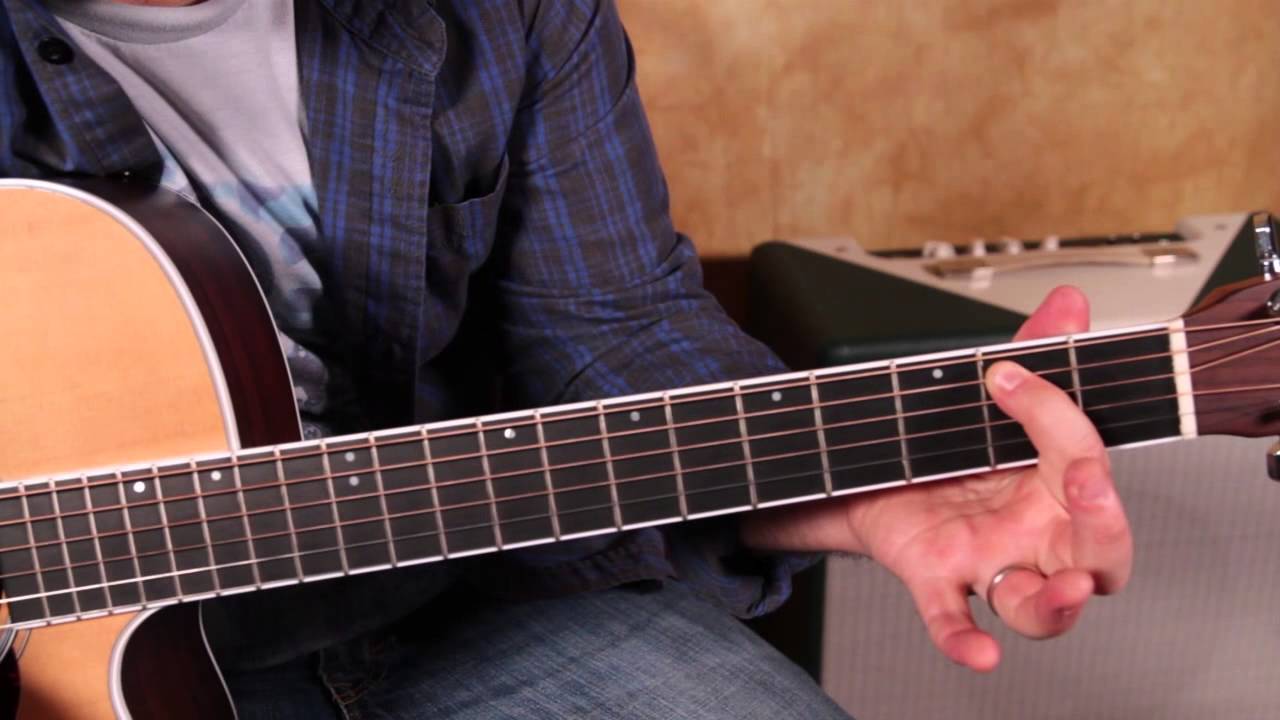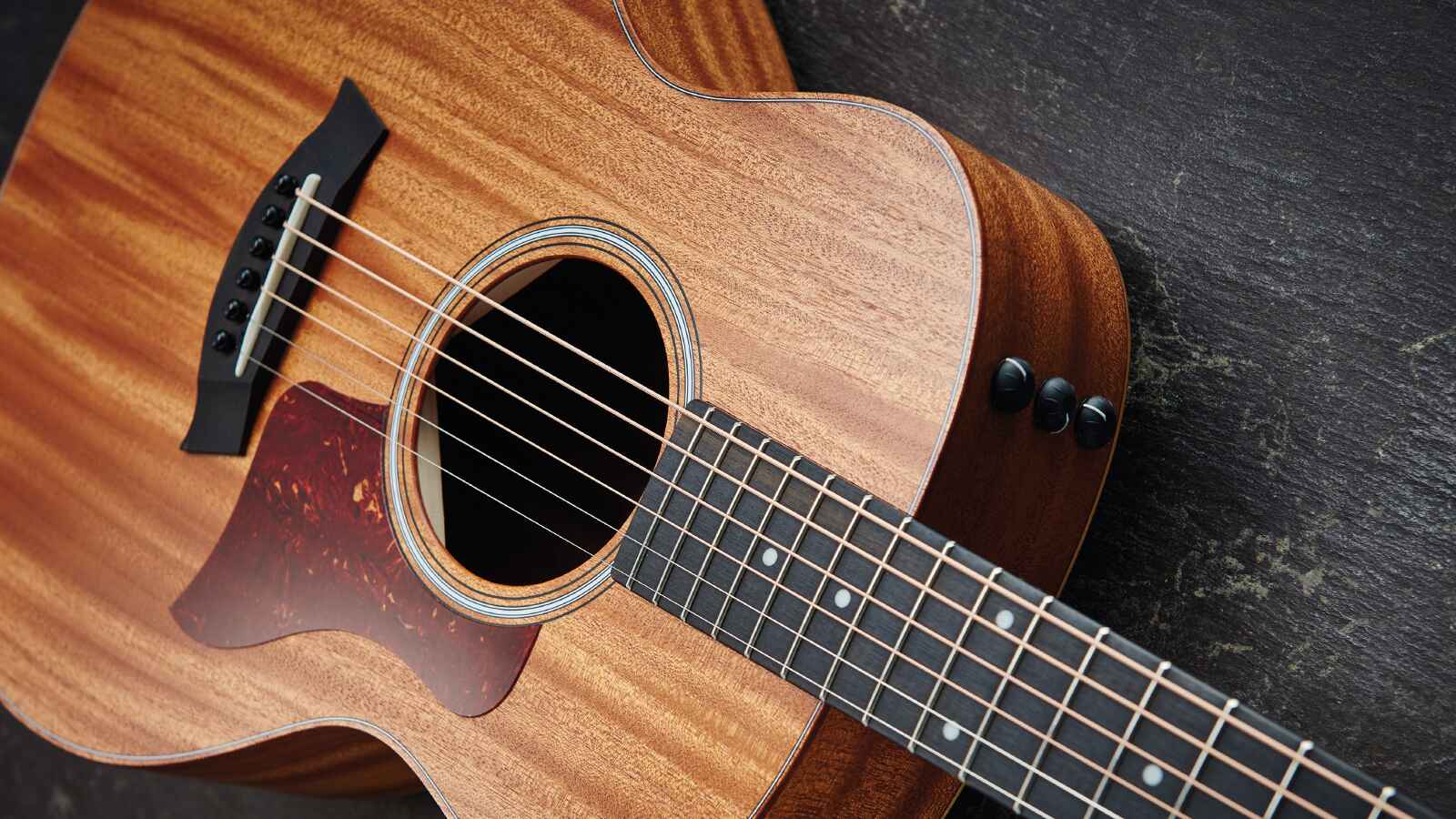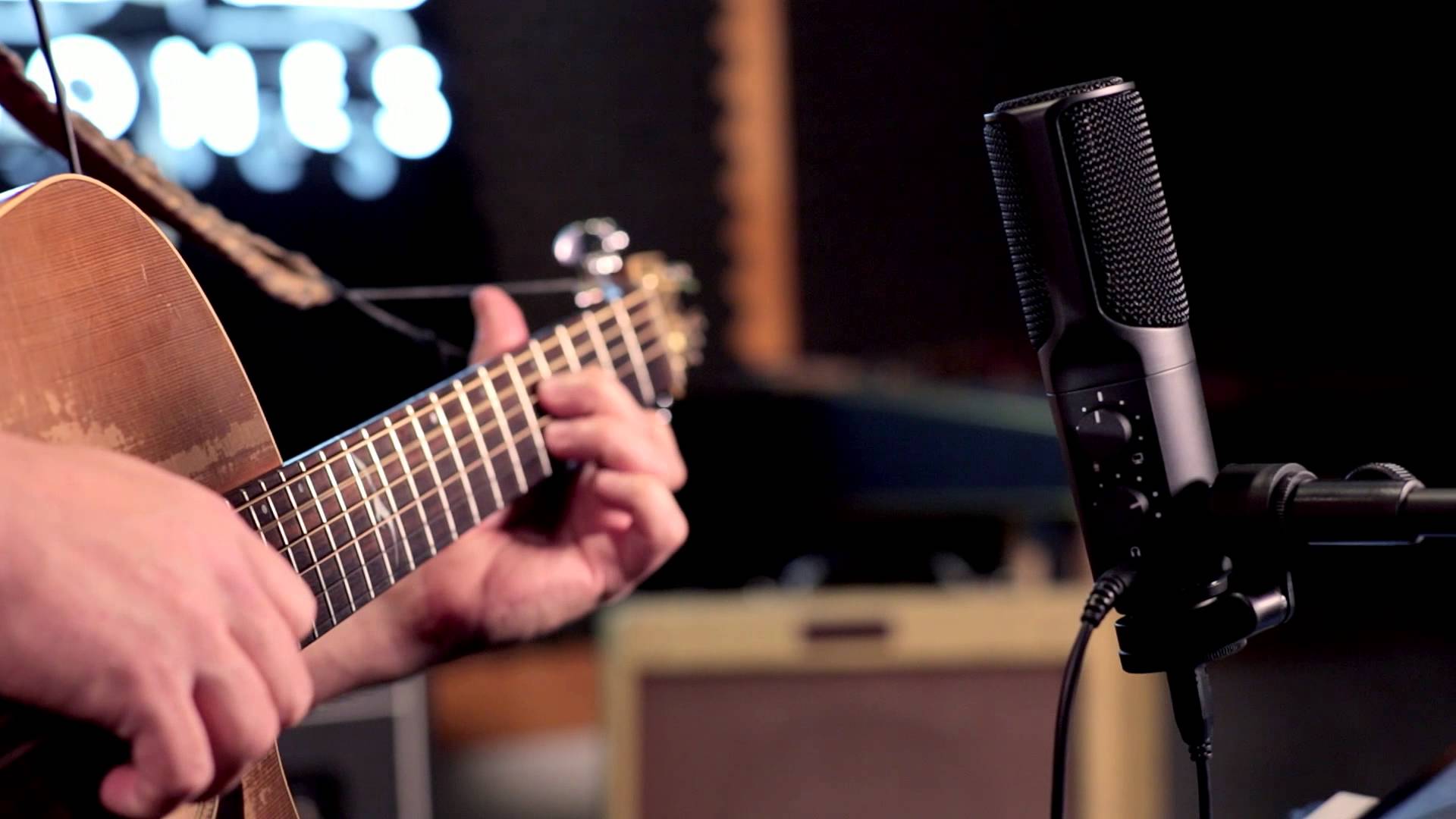Introduction
Welcome to this acoustic guitar lesson on playing “When I Come Around” by Green Day. In this lesson, we will dive into the chords, strumming patterns, and techniques needed to master this iconic song on the acoustic guitar. Whether you’re a beginner or an experienced player looking to expand your repertoire, this lesson will guide you through the process step by step.
“When I Come Around” is a classic 90s rock anthem that showcases a combination of catchy melodies, memorable lyrics, and energetic guitar parts. Originally released in 1994, this song was a massive hit for Green Day, helping to solidify their status as one of the leading punk rock bands of their time.
Through this lesson, you will not only learn to play the song accurately but also gain insight into the techniques used by Green Day’s guitarist, Billie Joe Armstrong. From chord progressions to strumming patterns, we will break down each element so that you can play along with confidence.
Before we dive in, make sure you have your acoustic guitar ready and tuned. It’s also helpful to have a basic understanding of open chords such as G, C, and D, as these will be used extensively in the song. If you’re new to guitar or need a refresher, don’t worry – we’ll go over the chords and their finger positions in this lesson as well.
So let’s get started and learn the iconic acoustic rendition of “When I Come Around” by Green Day!
Equipment Needed
To play “When I Come Around” on the acoustic guitar, you won’t need an extensive list of equipment. Here’s what you’ll need to get started:
- An acoustic guitar: Make sure your guitar is in good condition and properly tuned before you begin.
- A guitar pick: While you can use your fingers to strum, using a pick will give you more control and consistency.
- A guitar strap: This is optional, but it can help you maintain a comfortable playing position if you’re standing up.
- A capo: Although not necessary, a capo can be useful if you want to play the song in a different key or match the original recording.
These are the basic items you’ll need to play the song. However, keep in mind that the sound can be further enhanced by using additional accessories such as an amplifier or effects pedals. Nonetheless, let’s focus on the essentials for now.
It’s worth noting that the song can be played on both acoustic and electric guitars. However, for the purpose of this lesson, we will be specifically focusing on the acoustic guitar version. If you are playing on an electric guitar, make sure to adjust the tone settings accordingly to achieve a similar sound.
Now that you have the necessary equipment ready, let’s move on to the core elements of playing “When I Come Around” on the acoustic guitar, starting with the basic chord progression.
Basic Chord Progression
The backbone of “When I Come Around” lies in its simple yet effective chord progression. The song primarily uses three open chords: G, D, and C. Let’s take a look at the chord shapes and their finger positions:
- G chord: Place your index finger on the second fret of the A string, your middle finger on the third fret of the low E string, and your ring finger on the third fret of the high E string. Strum all the strings starting from the low E string.
- D chord: Place your index finger on the second fret of the G string, your middle finger on the second fret of the high E string, and your ring finger on the third fret of the B string. Strum from the D string.
- C chord: Place your index finger on the first fret of the B string, your middle finger on the second fret of the D string, and your ring finger on the third fret of the A string. Strum from the A string.
The basic chord progression for the verse and chorus is G – D – C – D. In other words, you will play the G chord for one measure, followed by the D chord for one measure, then the C chord for one measure, and finally back to the D chord for one measure. Repeat this progression throughout the song, and you’ll have the foundation of “When I Come Around” down.
Remember, take your time with each chord and ensure that all the notes sound clear and clean. Practice transitioning from one chord to another smoothly to maintain a steady rhythm. With consistent practice, you’ll soon be able to flow through the basic chord progression effortlessly.
Now that you have the fundamental chord progression under your fingers, let’s move on to the strumming pattern required to bring the song to life.
Strumming Pattern
The strumming pattern is crucial in capturing the energy and vibe of “When I Come Around.” It adds a dynamic feel to the song and helps drive the rhythm forward. The strumming pattern for this song is relatively straightforward and follows a consistent down-up pattern. Let’s break it down:
1. Start by strumming downward with the pick across all the strings. This is the “down” part of the pattern.
2. Next, strum upward with the pick across all the strings. This is the “up” part of the pattern.
3. Repeat steps 1 and 2 in a continuous motion, maintaining a steady rhythm throughout the song.
To match the feel of the song, focus on accentuating the downbeat on the stronger beats, which are primarily on the first and third beats of each measure. This will give the song a driving and rhythmic feel. As you become more comfortable with the strumming pattern, you can start adding some variations and dynamics to make it your own.
Remember, practicing the strumming pattern slowly and accurately is crucial for building muscle memory and developing a steady rhythm. Use a metronome if necessary to help you maintain a consistent tempo.
Now that you have the chords and strumming pattern down, let’s move on to learning how to play the verse of “When I Come Around.”
Playing the Verse
The verse of “When I Come Around” follows a simple chord progression using G, D, and C. With the basic chord shapes and strumming pattern, you’ll be able to replicate the catchy and rhythmic verse of the song. Here’s how to play it:
1. Start by playing the G chord for one measure using the strumming pattern outlined earlier.
2. Transition to the D chord and play it for one measure with the same strumming pattern.
3. Move to the C chord and strum it for one measure.
4. Finally, return to the D chord and play it for one measure again.
Repeat this chord progression throughout the verse, maintaining a steady rhythm with consistent strumming. Pay attention to the timing and ensure a smooth transition between the chords.
As you play the verse, make sure to listen to the original song for reference. This will help you get the correct feel and timing of the chord changes. Additionally, you can experiment with adding some slight variations or embellishments to make your performance unique while staying true to the song’s essence.
With practice, you’ll be able to play the verse of “When I Come Around” smoothly and confidently. Next, let’s dive into the chorus section of the song.
Playing the Chorus
The chorus of “When I Come Around” adds a powerful and melodic element to the song. It builds on the basic chord progression we’ve already learned. Let’s break down how to play the chorus:
1. Start by playing the G chord for two measures using the strumming pattern.
2. Transition to the D chord and strum it for one measure.
3. Move to the C chord and strum it for one measure.
4. Return to the G chord and strum it for two measures.
Repeat this chord progression throughout the chorus, following the strumming pattern we’ve previously discussed. The chorus adds an uplifting and catchy hook to the song, and getting the strumming and chord changes right will bring out its full impact.
As you play the chorus, pay attention to the song’s dynamics. Green Day often adds some variations and dynamics to their performances, so feel free to experiment with different strumming techniques and accentuations to add your own touch to the song.
Listening to the original recording is essential for capturing the nuances and timing of the chorus. It will help you understand the transitions between the chords and incorporate any slight variations that Green Day uses.
With practice and consistency, you’ll be able to play the chorus of “When I Come Around” with confidence. Now, let’s explore some ways to add variations and embellishments to make your performance even more exciting.
Adding Variations and Embellishments
While the basic chord progression and strumming pattern are the foundation of “When I Come Around,” adding variations and embellishments can elevate your performance and make it more interesting. Here are a few ideas to spice up your playing:
1. Palm muting: Experiment with palm muting the chords to create a muted and percussive sound. This technique works best on the verse sections to give the song a gritty and intense feel.
2. Accents: Accentuate certain strums within the pattern to add dynamics. You can emphasize the downbeat or accentuate different beats to create variations and make your playing stand out.
3. Fingerpicking: Instead of using a pick, try fingerpicking or hybrid picking the chords. This technique can add a softer and more intricate texture to the song, particularly during the intro or bridge sections.
4. Arpeggios: Break down the chords into arpeggios by picking each note individually. This technique adds a beautiful and melodic layer to your playing, especially during instrumental sections or when accompanying a solo.
Remember, the goal is to add your own personal touch while staying true to the overall structure and feel of the song. Don’t be afraid to experiment and find what works best for you.
Listening to live performances or covers of “When I Come Around” can provide inspiration for different variations and embellishments. Pay attention to how other guitarists interpret the song and incorporate their own unique style into their playing.
With time and practice, you’ll develop your own variations and embellishments that will make your rendition of “When I Come Around” even more captivating and enjoyable to play.
Now, let’s move on to some tips for mastering the song and refining your overall performance.
Tips for Mastering the Song
To truly master “When I Come Around” and deliver a polished performance, here are some tips to keep in mind:
- Practice with a metronome: Use a metronome or a drum loop to develop a solid sense of timing and maintain a consistent rhythm throughout the song. This will help you stay in sync with the original recording and any other musicians you may be playing with.
- Start slow, then gradually increase the tempo: Take your time to learn the chords, strumming patterns, and transitions accurately. Begin by practicing at a comfortable tempo and gradually speed up as you gain more confidence and accuracy.
- Gradually add dynamics: Pay attention to the dynamics of the song and gradually incorporate different strumming dynamics, accents, and variations. This will add depth and excitement to your performance, making it more engaging for listeners.
- Listen to the original recording: Study the original recording of “When I Come Around” to capture the subtle nuances, chord voicings, and overall vibe of the song. This will help you understand and recreate the authentic sound and feel in your own rendition.
- Record yourself: Set up a recording device or use a recording software to document your progress. By listening back to your recordings, you can identify areas that need improvement, refine your technique, and track your progress over time.
- Experiment and make it your own: While it’s important to learn the song accurately, don’t be afraid to add your own personal touch. Explore different strumming patterns, chord voicings, or even solos to make the song uniquely yours while staying true to its essence.
Remember, mastering a song takes time and dedication. Be patient with yourself and enjoy the process of learning and refining your skills. Practice regularly and don’t be afraid to seek feedback or guidance from experienced guitarists or instructors.
Now that you have a solid foundation and these tips in mind, keep practicing and have fun mastering “When I Come Around” on the acoustic guitar!
Conclusion
Congratulations! You have now learned the essentials of playing “When I Come Around” by Green Day on the acoustic guitar. From the basic chord progression to the strumming pattern and various tips for mastering the song, you are well on your way to delivering a captivating performance of this iconic track.
Remember to practice consistently, paying close attention to your timing, technique, and dynamics. As you become more comfortable with the song, feel free to add your own variations and embellishments to make it your own.
Listening to the original recording and studying live performances of the song can provide valuable insights into the style and nuances of Green Day’s guitarist, Billie Joe Armstrong. Use these as references, but don’t be afraid to add your own flair and personal touch to create a unique interpretation of the song.
Lastly, enjoy the process of learning and mastering “When I Come Around.” Playing the acoustic guitar is not just about technical accuracy, but also about expressing your creativity and emotions through the music you create. So keep practicing, have fun, and let the energy of this classic rock anthem shine through your playing.
Now it’s time to pick up your guitar, put everything you’ve learned into practice, and rock out with “When I Come Around.”

























